Review: Apple's new 11.6-inch and 13.3-inch MacBook Air (Late 2010)
Apple MacBook Airs (late 2010)
4.0 / 5Jump to a different section
The original MacBook Air, launched at the beginning of 2008, drew praise over its unique combination of a high mobility, super-thin design that managed to retain a full sized keyboard and 13-inch display. However, it was also criticized over its limited performance and expandability and its relatively high price.
At the end of 2008 and again midway through 2009, Apple twice addressed the Air's critics with design refreshes that upgraded the machine's processor options and graphics, replacing its lethargic Intel GMA X3100 (driving a Micro-DVI port) with a more advanced Nvidia GeForce 9400M (standardizing on Mini DisplayPort output), while also dropping the entry level price from $1,799 to $1,499.
This year, Apple completely redesigned the 13-inch MacBook Air, adding an additional USB port, upgrading the graphics to use Nvidia's GeForce 320M, expanding the battery capacity, increasing the screen resolution (from a "13-inch" resolution of 1280x800 to a "15-inch" resolution of 1440x900), and moving exclusively to a speedy, "instant-on" solid state flash drive for storage.
Apple also shaved off a tenth of a pound of weight and two millimeters of thickness from the 13-inch model, while also introducing a new 11-inch model with a 1366x768 screen that drops an inch of width, nearly an inch and a half of depth, two millimeters of thickness, and 0.7 lbs from the original design.
The deepest design cut, however, slashed the Air's entry level price by a third, matching the company's lowest priced White MacBook model at $999 on the 11-inch model, while knocking $200 off the base price of the 13-inch version, which now starts at $1,299.
The introduction of the new Air models makes for some tough choices for MacBook buyers, posing the question: what's most important in your needs for a notebook: size, weight and mobility, or performance, expandability and features?
The entry level White MacBook is the same price as the 11-inch Air, but offers a faster CPU and more storage capacity via its conventional hard drive. It can also be upgraded to 4GB at any time; the new Air can only move past 2GB if you choose that option at purchase; there's no way to add more RAM afterward. The low end MacBook also has a larger display, although its resolution is about the same: slightly taller but not quite as many pixels wide: 1280x800 rather than the 11-inch Air's 1366x768.
The entry level MacBook also has an optical drive for playing DVDs, installing software, and burning discs, and sports Gigabit Ethernet for fast wired networking. However, it has a larger, thicker, cheaper looking plastic body that weighs 4.7 pounds. What was once an easy decision (a hearty $999 general purpose notebook vs. the ultra thin $1,499 subnotebook) is now a chin scratcher (general purpose notebook vs a micro-luxury, sexy device with some limitations but far fewer drawbacks than before, both at the same $999 price).
The introduction of the new Air models also presents a more difficult decision when compared against the 13-inch MacBook Pro. While you get more RAM (4GB vs 2GB, plus more room for growth up to 8GB), more disk storage (albeit via a conventional, slower hard drive), an optical disc, a backlit keyboard, FireWire 800 and Gigabit Ethernet, you also get an extra pound and a half of weight, a significantly lower resolution (but higher quality) display, and a machine that's nearly twice as thick, but only $100 less than the 13-inch Air.
Or, alternatively, you can compare the smallest MacBook Pro against the 11-inch Air, which offers a much more compact outline, half the weight, and essentially the same resolution screen for $200 less. It all comes down to whether you want to work hard on a mobile notebook or have a super light and thin device that does almost everything nearly as well (at least until you start busting out the heavy lifting apps).
The 15- and 17-inch MacBook Pros deliver far bigger screens and much faster performance, making them easier to choose between for users who need full sized performance more than featherweight mobility. However, if you already have a desktop system, the new Air models might tempt you to trade in your big notebook for a more portable device that's more go and less do.
In general, Apple's MacBook Air offerings reestablish the notebook as a less powerful but far more mobile form factor contrasted with the full sized desktop, which is what notebook computers used to be in the '90s. Over the last decade, notebooks generally became powerful enough to serve as both a desktop workhorse and mobile enough to last as a battery-powered portable system.
On page 2 of 4: Comparing the Air to iPads and netbooks
Jump to a different section
The MacBook Airs' new category of mobile machine is particularly interesting for Apple to debut now, given that the company just established the iPad as a new tier of mobile device below the full sized needs of the notebook and yet significantly differentiated above the handheld mobile arena of the smartphone or iPod touch.
In fact, if Apple hadn't just successfully launched the iPad with such an explosive, industry neck-snapping violence that managed to vaporize the nascent "netbook" category and send PC makers into frantic efforts to develop their own tablets, the new MacBook Air models, and particularly the 11-inch version, would likely be described as Apple's new "netbooks."
Unlike netbook offerings, however, Apple isn't trying to compete in the $400 space with a micro-sized notebook with a tiny chiclet keyboard, low resolution 10-inch display (1024x600 is customary among netbooks), an anemic Atom processor paired with a barebones Intel GMA GPU, a single gigabyte of RAM, and a limited version of Windows 7 that requires an $80 OS upgrade just to work as expected.
Apple's unlikely to woo many discount netbook buyers with the MacBook Air, but it has been able to attract a lot of attention in that segment with the $499 iPad and $199 iPod touch, both of which offer much of the capabilities of low end netbooks at a similar price target. The Air models are clearly aimed at a market above the netbook, which is why they overlap with the lower end of the MacBooks to create those difficult buying decisions outlined earlier.
Still, there will be a segment of the market comparing the MacBook Air (particularly the 11-inch model) against the iPad. In terms of hardware, the MacBook Air packs significantly more processor power and memory: a full sized Core 2 Duo and dedicated Nvidia graphics processor and 2 to 4GB of RAM, compared to the iPad's integrated A4 application processor and 1GB of RAM.
Despite those differences, the Air and iPad both provide a capable computing experience with a responsive, fluid user interface. This is in contrast to most netbooks, which often try to force a full desktop operating system to run within cost-contained hardware, typically a "mobile" Intel Atom CPU and a lethargic embedded GPU strangled by limited RAM.
The screen size and resolution of the 11-inch MacBook Air is comparable to the iPad; its display is not quite as tall but slightly wider, and its resolution is identical vertically while being about a third wider. These added pixels make the Air better suited to Mac OS X's multiple windowing environment as opposed to the iPad's "one full screen app at a time" iOS interface. The 11-inch Air's added screen width makes it slightly preferable to the iPad for watching widescreen movies, but there's less of an advantage when viewing maps, documents and web pages, all of which are more fun to peruse on the iPad with its multitouch display, and often benefit more from vertical real estate rather than extra width on the screen.
While the 11-inch Air's small display will initially feel cramped to users accustomed to a larger screen, its resolution is fully capable of web browsing, document editing, and media playback. In fact, its widescreen aspect ratio results in cinematic movies playing at about the same size as they do on the 13-inch Air's screen once you subtract the letterbox bands on the top and bottom.
While the iPad commands an advantage in direct manipulation with its multitouch screen, the Air's integrated keyboard and trackpad make it more conventionally productive, particularly when entering any amount of text. Depending on the task at hand, the iPad's tablet form factor will either offer a simpler, streamlined and more rugged solution, or an excessively constrained experience that loses out to the Air's familiar clamshell construction. Despite being nearly the same size when closed (and feeling about as heavy), the 11-inch Air offers not just an expanded screen and full size keyboard, but also packs in a video conferencing camera, standard USB ports, and more flexible external display options than the iPad.
For users with more customary computer-like needs, the 11-inch MacBook Air delivers the fantasy tablet experience many iPad critics had wished for, with the full Mac OS X experience; conventional text input with a comfortable, integrated keyboard; and the ability to run all their existing Mac apps, including FaceTime video conferencing. Like the iPad, the Air delivers a thin, light but strong form factor with "instant on" performance, lasting seemingly forever when left idle and waking up immediately at the tap of a button. The Air is clearly a close relation to the iPad in terms of design, although it also costs twice as much and weighs 0.8 pounds more than the entry level iPad (2.3 pounds vs 1.5 pounds).
On the other hand, the iPad has no hinges to tweak, doesn't need to be opened up to use, and can be purchased with integrated 3G WWAN capabilities, something the Air conspicuously lacks. Why didn't Apple include an option for internal mobile networking with a plan comparable to the iPad's flexible contract-free service agreement? The only possible explanation is a constraint on size, but this seems like such an attractive option that it remains puzzling. Perhaps Apple expects users to spring for a tethering plan on their smartphone instead of modifying the Air's design to include a 3G antenna and receiver.
On page 3 of 4: What's new in the MacBook Air design
Jump to a different section
How do the new MacBook Air models compare to the previous version they replace? They're slightly thinner and lighter, have more easily accessible ports on both sides (accommodating two USB ports rather than just one), sport higher resolution screens, and while missing the illuminated keyboard of the original Air, they now have the glass trackpad of the rest of the MacBook line. The 13-inch model (but not the smaller 11-inch) also now sports an SD Card slot like the rest of Apple's consumer offerings.
The MacBook Air's screen doesn't seem as bright or vivid as the MacBook Pro displays, but doesn't look flawed in normal use when you're not making a direct comparison. The display is bright and clear and sharp, and full color gradients look smooth, not choppy or dithered.
The Air models retain a matte, metallic frame around the inset display rather than the black margin around the Pro screens, all covered in a single sheet of glossy glass. While the Air screens are also glossy, they don't look quite as distractingly shiny as the Pro models because of this solid grey frame (as shown below).
To achieve a super thin case lid, Apple used a unique LCD construction method that sheds the usual packaging of the LCD panel. This results in an insanely thin top that's thinner than a standard LCD component by itself. The 11 inch Air's lid remains very rigid to the point where it's hard to flex the screen at all, while the larger 13 inch screen is susceptible to rippling the screen if you twist on the cover enough. Neither feels fragile enough to worry about excessively however.
The hinge feels buttery smooth and remains set at any position you adjust it to, even when lying in bed and holding it vertically over your face. Do that with a MacBook Pro and the lid tends to drop down with gravity. The lid also houses an iSight camera (which Apple now refers to as a "FaceTime camera"), but does not have an ambient light sensor (for the backlit keyboard or automatic screen brightness adjusting), nor is there a mic in the screen. Instead, there's a mic on the right edge of the machine, which seems to work fine. Speakers are now greatly improved, with good sound now emanating from the keyboard in stereo, rather than there only being a somewhat flat, utilitarian mono speaker.
The new case design feels simpler; it's a chiseled wedge rather than curvy, rounded rectangle. The primary benefit of the new shape is that ports are easily accessible on either edge, without requiring the trap door of the original model to reveal a flat surface within the rounded sides of the machine. There's also more room for connectors, which allows for a convenient USB port on either side.
The new Air positions its Mini DisplayPort on the opposite side as the MagSafe connector, which seems to pose a minor problem for users of Apple's external LED Cinema Display. Its molded cable sports connectors intended for use with MacBooks, where all the ports are close together on the same side. The cable can accommodate the Air's ports, but it's a little clumsy (as pictured below).
What's new in the MacBook Air design: workarounds for missing hardware
There's still no options for FireWire nor Gigabit Ethernet, although Apple continues to offer its 10/100 Fast Ethernet USB dongle for users who want the option to connect to a wired network. Apple has worked around some of the need for FireWire by enhancing its Migration Assistant software to support importing user and machine information from a networked machine in addition to a Mac in FireWire target mode.
Apple has also taken additional steps to minimize the need for an optical disc. The original Air included Remote Disk software for sharing a networked machine's optical drive, or even booting from an install disc on the network. This model takes things a step further by including a tiny 8GB flash dongle that plugs into a USB port.
The tiny stick contains both Mac OS X 10.6.1 Snow Leopard and the new iLife 11 installer, simplifying the process of reinstalling factory software without messing with disc sharing over the network. The read-only device works on any USB-equipped machine, but the software installer reports that "this version is not compatible with your computer" if you attempt to use it on other Mac models.
The new Air models are also distinguished by the fact that they now only use solid state flash drives for storage, rather than offering the iPod Mini-sized 1.8-inch HDD option that was the default configuration of the original Air. While SSDs are typically faster than HDDs for reading information, the new Air SSDs are even more dramatically faster than the old Air's HDD because its super small mechanical drive was so slow to start with.
Factoring in the much faster performance of the SSD, the new Air is significantly faster despite having the same CPU clock speeds. It's even comparable in performance to the low end, full sized Core2 Duo MacBooks, erasing limited performance as a potentially deal-breaking drawback of going ultramobile. The fastest MacBook Pros still maintain a significant processing speed advantage with their Core i5 and i7 CPUs, but the overall speed of the Air still maintains a lead in areas where the bottleneck is the drive and not the CPU, such as when launching apps (see performance benchmarks below).
In reviewing the original Air, we compared the HDD model to the SSD option; however, SSD was quite an expensive upgrade. In early 2008, upgrading from the Air's standard 80GB HDD to a 64GB SSD cost a steep $999.
Component costs have dropped a little since, but Apple has also addressed the expense barrier of SDD technology by stripping the need for a HDD-sized case. Most SSDs on the market are built as drop in replacements for 2.5-inch HDD mechanisms, making it easier for users to upgrade. But because Apple designed the Air from scratch, it could include SSD functionality in any shape it needed.
System Profiler indicates the new MacBook Air with 128GB SSD uses an Apple-identified SSD labeled "TS128C," with a capacity of 121GB, formatted as a Mac OS X partition that provides 101.8 GB of usable storage. The SDD reports that it does not support SATA NCQ "Native Command Queuing," a technology used to optimize SSD devices by enabling them to queue up disk requests to stay productive when the CPU itself gets too busy, or alternatively to process disk requests in parallel.
The device also reports that it lacks TRIM support, but Mac OS X does not support TRIM either. TRIM is a technology designed to proactively wipe unused (deleted) data on SSD devices to increase performance and reduce incremental slowdowns over time. Unlike conventional HDDs that can write and overwrite data equally as fast, SDDs are more efficient at writing new data. When they have to overwrite existing data, they must first stop to erase the existing information before writing anything new. This adds a step that eventually slows device performance down significantly when the erasing prep-work isn't being done in advance by TRIM.
Apple's plans to support TRIM are not yet known; while Microsoft added official TRIM support to Windows 7 last year, Apple has only officially added a support in firmware for a TRIM reporting option, which is why "TRIM = no" appears in System Profiler only on newer MacBook models. Apple is likely working around the peculiarities of SSD storage in unique ways, as the company is certainly not a neophyte in using Flash storage devices; Apple is the largest buyer of Flash RAM globally, and has long used Flash storage extensively in its iPods and iOS devices, in addition to pioneering SSD adoption in its Mac notebook, desktop, server and RAID systems.
On page 4 of 4: Performance overview, MacBook Air in review
Jump to a different section
Performance overview: CPU
In raw benchmarks, the new MacBook Air scores about the same as the previous models, which were offered at the same clock speeds. Our benchmarks were slightly better, but the newer, high end Air also had 4GB to work with. While not nearly as fast as a Core i5 MacBook Pro, the new Air scores just slight behind the entry level MacBook, which runs a significantly faster CPU (2.4GHz compared the 2.13GHz high end option on the Air). The slowest Air CPU option gives up significant raw performance to hit the price, efficiency, and design constraints of that model.
Using benchmarks that pay more attention to overall performance rather than just grilling the CPU, the latest MacBook Air models show significant performance gains over the previous design, in part due to a better graphics chip (nVidia's 320M vs the earlier 9400M), but also because of the faster disk access of the new SSD, which improves both disk reads and virtual memory performance system wide. In a file copy test, the Air performed disk operations just over five times faster than previous Air's 1.8 inch, 4200rpm conventional HDD.
Testing by Macworld indicated the Air's new SSD flash storage enabled the 13-inch, 1.86GHz model to achieve a Speedmark 6.5 score, beating a 13-inch MacBook Pro with a 2.4GHz Core2 Duo processor. The Core i5 options available on the 15-inch and larger MacBook Pros are significantly faster than the Air however, scoring about a third higher.
More RAM is critical to Mac OS X's performance, even if the SSD on the new MacBook Air seems to suffer less from virtual memory paging than a conventional hard drive does. For that reason, the 2GB limit on most Air models seems rather stingy. Fortunately, you can now order the Air with 4GB of RAM installed, but your only opportunity to do so comes at the time of purchase. There's no option to upgrade a RAM module later, as the memory chips are actually soldiered onto the logic board.
Compared to other MacBook models, this lack of upgradability is a significant shortcoming, although previously Apple offered no memory upgrade option at all on the MacBook Air beyond the standard 2GB. Unless you only plan to ever browse the web and do simple email and document editing, it makes a lot of sense to spring for the $100, 4GB upgrade at purchase. Note that doing so also limits your return options on a "build to order" model, but that it also will increase the resale value of the machine.
The MacBook Air's integrated batteries not only last a long time, but combined with the instant standby and wake afforded by its SSD design, allow the machine to remain in standby for days; Apple says it can last for a month. This results in the new Air having a shelf life availability along the lines of the iPad, where you don't have to consciously think about keeping it charged up; just grab it and go. It's pretty much always ready to play, and recharges rapidly when you do need to top off the battery. There isn't any external battery meter however, and the software-base reporting of how much charge you have left isn't always accurate.
Apple really delivered on the premise of marrying its notebook and iPad savvy together to create the MacBook Air. The overall design of the Air exemplifies the benefits of integrating customized parts together rather than just assembling stock components off the shelf. It's not just the SSD or the battery or the operating system that makes the Air a strong product, it's the combination and interaction between those parts. Few other manufacturers work so hard at tight integration and customization and take such forward thinking leaps when investing in the technologies needed to deliver these composite innovations.
The new MacBook Air models expand upon Apple's original intent to deliver a light, highly mobile notebook with full sized usability. The original Air debuted the company's innovative unibody construction, which Apple has since brought to the rest of its MacBook line. The latest Air sports a refinement of this unibody design that still delivers an incredibly thin and light but strong and rigid case, with improved port access.
The smaller 11-inch Air delivers the same functional level of performance as previous models in a much more compact form factor that should appeal to users who'd like an iPad sized device with the features of a full desktop operating system. Along with its 13-inch sibling, the new Air models deliver a nice jump graphics performance while still holding on to their impressive battery life delivered via integrated batteries.
Apple's bold move to standardize on SSD flash storage exclusively means the Air is virtually silent, faster than you'd expect given its processor clock speed, and jumps back from sleep as fast as the iPad. It can also coast along without a power brick in standby mode for days, a great feature when you're traveling and need every minute of battery life.
On the downside: the new Airs no longer sport a backlit keyboard (either due to space or cost constraints), making it a little more of a strain to hit unfamiliar keys in dim lighting. This might annoy travelers who want to hit playback buttons on the F-keys while in a dark airplane cabin, but this is rather high end luxury feature missing on most other PC laptops as well. Another victim of the limited space on the super thin, tiny Air is the SD Card slot on the 11-inch model, and of course the FireWire and Gigabit Ethernet on both Air models.
The skimpy 2GB of RAM on the base Air models begs for an upgrade, and many users won't realize they need more memory until they begin using it for some time, at which point it will be too late to add any. Of course, the Air isn't designed to serve as a powerhouse workhorse machine, so for users with greater need for mobility than maximum multitasking capabilities, the standard 2GB should be acceptable. However, with Mac OS X Lion around the corner, it seems likely that anyone who gets a 2GB Mac at this point is going to wish they'd splurged on an upgrade.
Unlike most PC notebooks, Apple's offerings don't include support for Blu-Ray nor HDMI output connectors, although the Air does support audio output through the Mini DisplayPort, meaning users only need a cheap dongle to route both HDMI video and high quality audio out through the Mini DisplayPort to an HDMI TV.
Pros:
Solid construction despite featherweight, ultra-thin design
Great battery life and instant-on usability
Speedy SSD performance
Quite, cool operation
New SD Card slot on the 13 inch model
Smart flash drive alternative to installer DVDs
Cons:
Limited RAM and CPU upgrade options
Optical, Ethernet, HDMI all require dongles
No backlit keyboard option
AppleInsider has lined up a deal with Apple Authorized Reseller MacMall, which is currently offering AppleInsider readers an additional 3% off its already reduced MacBook Air pricing when ordering online using the links in the chart below, or through AppleInsider's full-fledged Mac Price Guide, until November 19th, 2010. These discounts fall below even Apple's educational pricing on the new Airs.
MacMall is also offering $102 savings off the high-end, non-standard 13.3-inch configuration that includes the 2.13GHz Core 2 Duo processor seen in the benchmarks above. MacMall has most Air models in stock while MacConnection claims to have the entire lineup in stock. Several other resellers, as can be seen above, are also discounting the MacBook Air to a lesser degree.
Jump to a different section
 Daniel Eran Dilger
Daniel Eran Dilger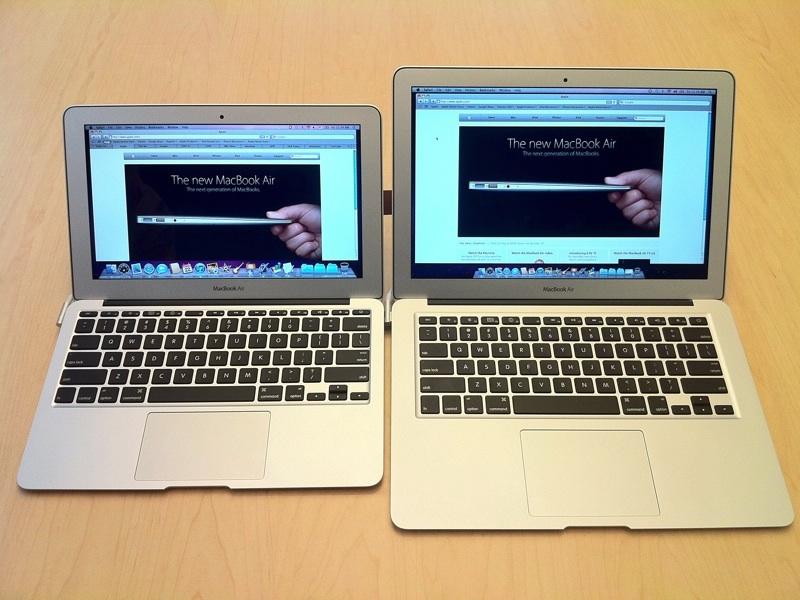
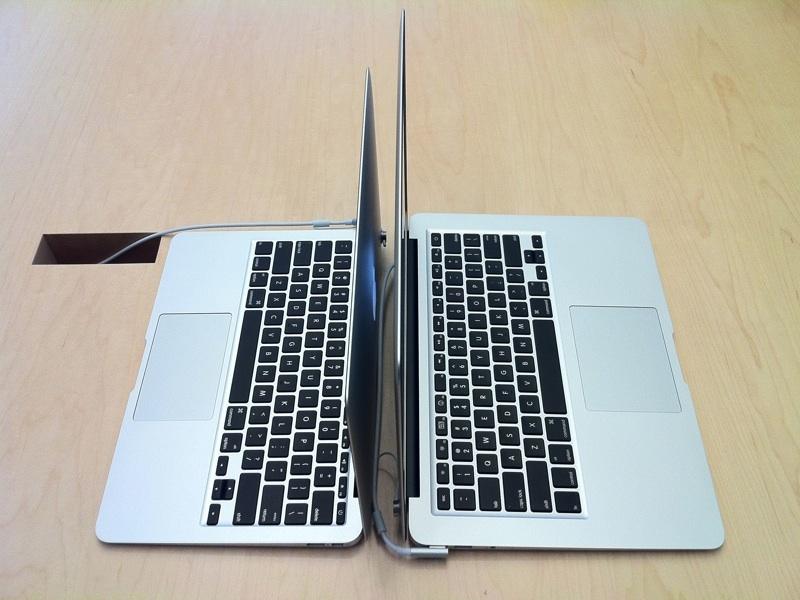
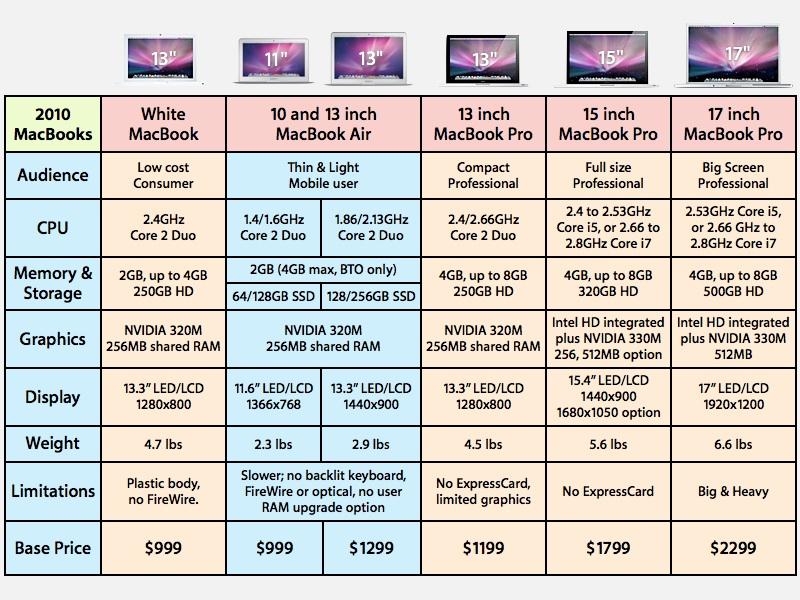
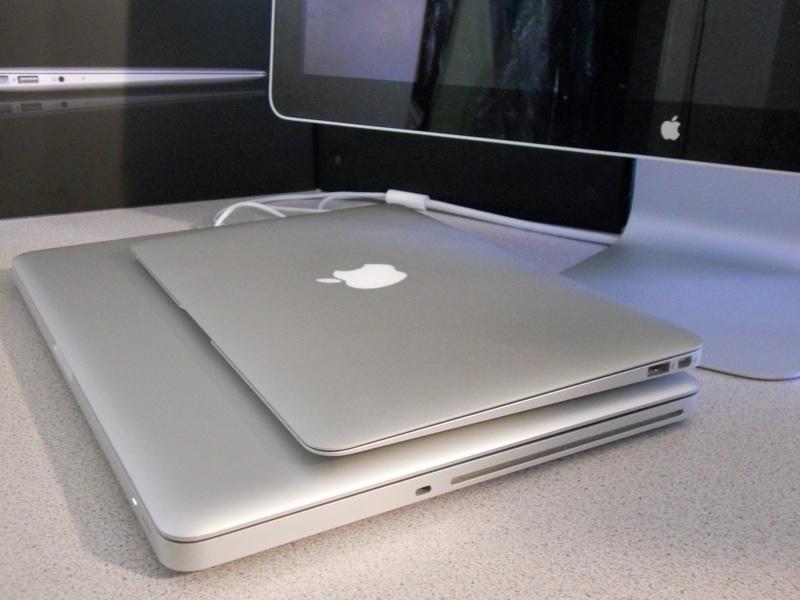
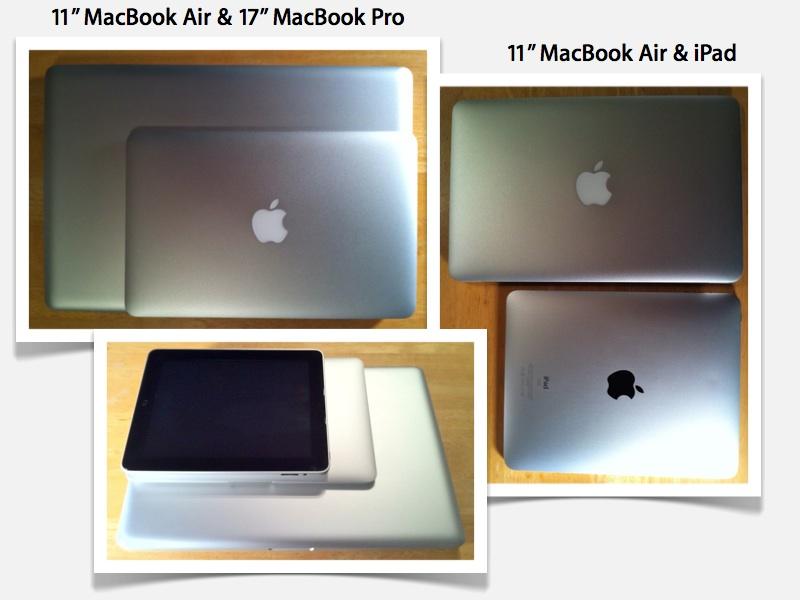
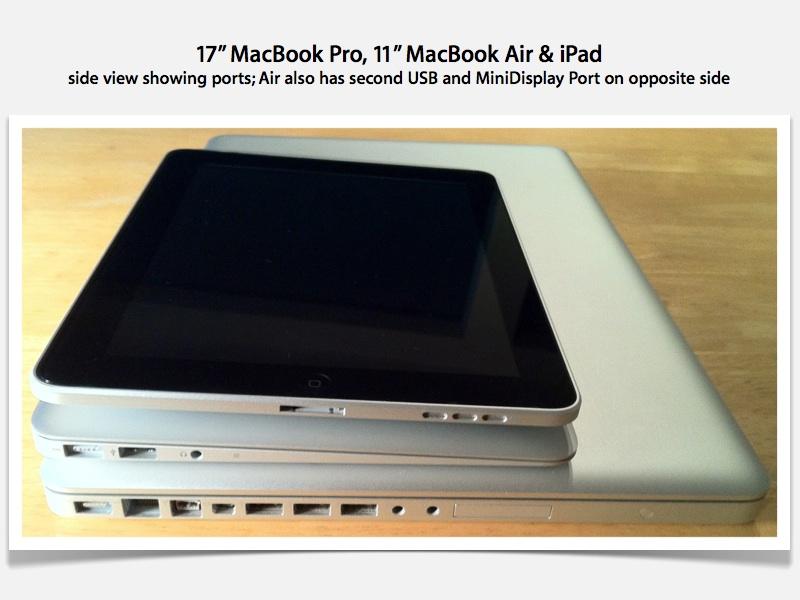
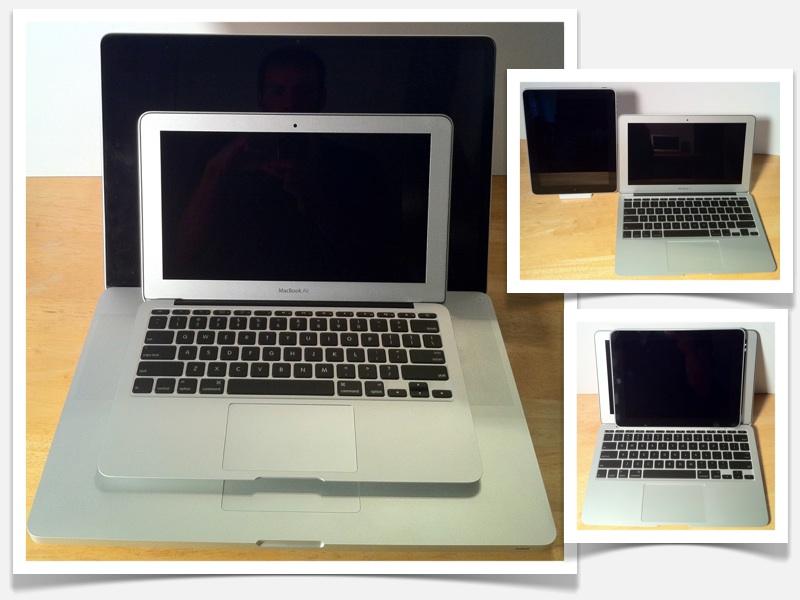

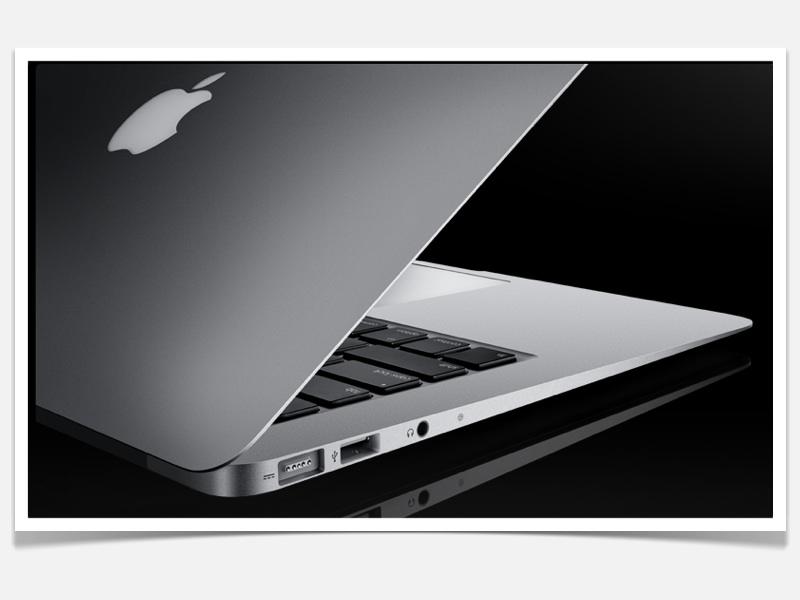
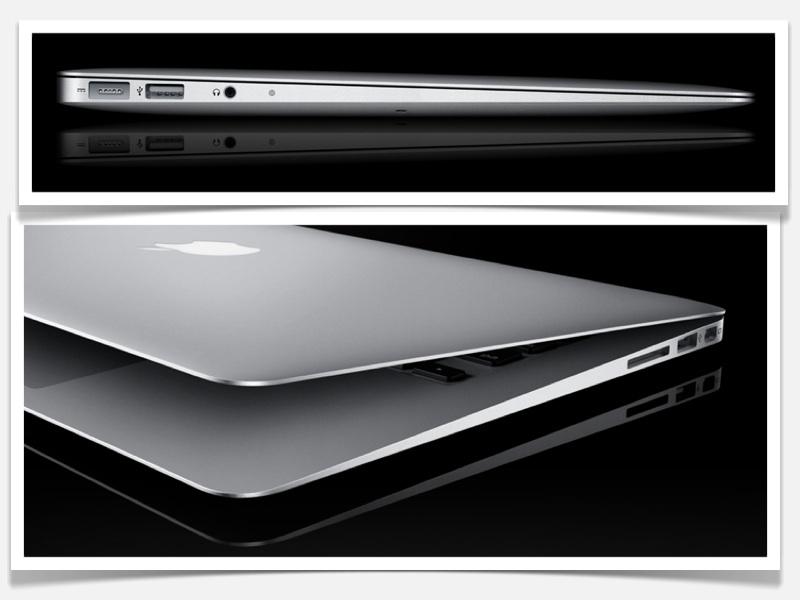
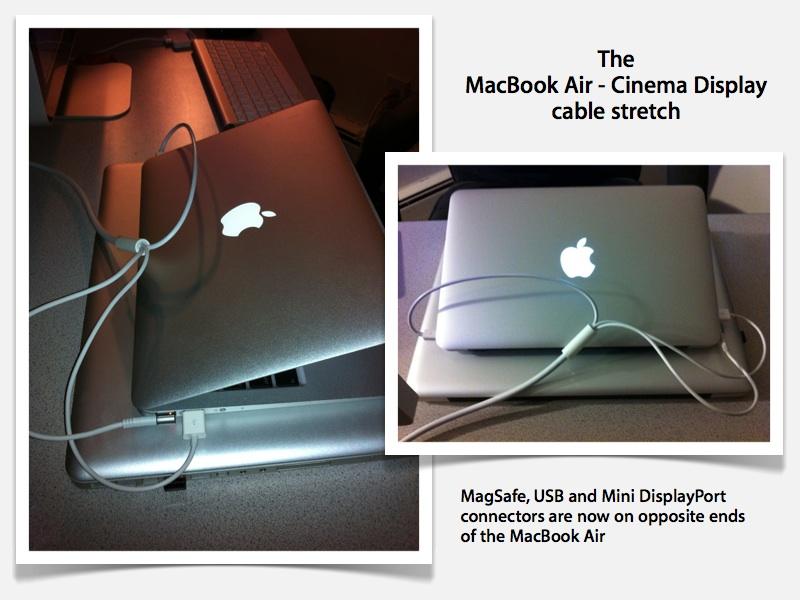
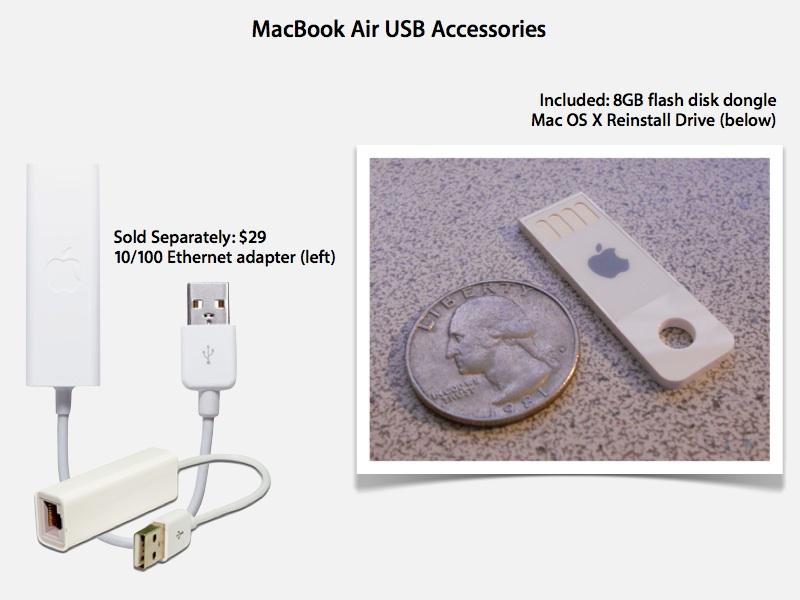
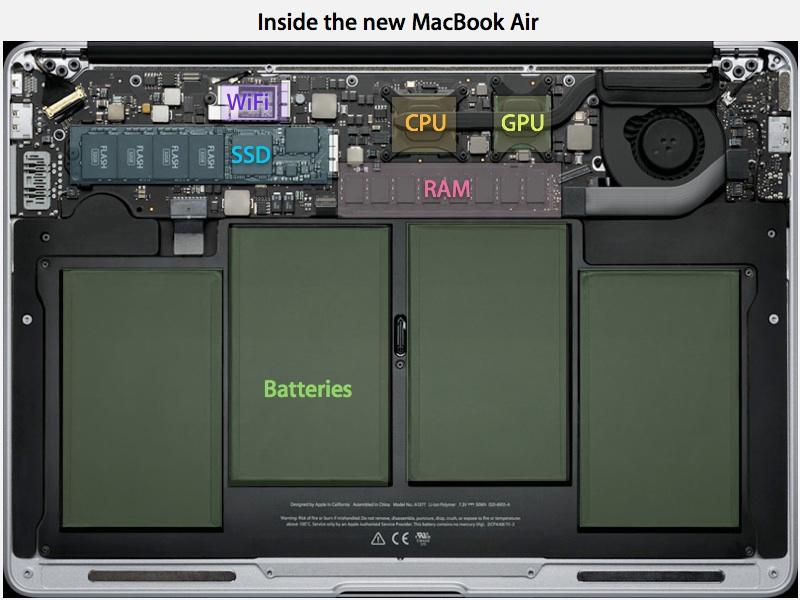
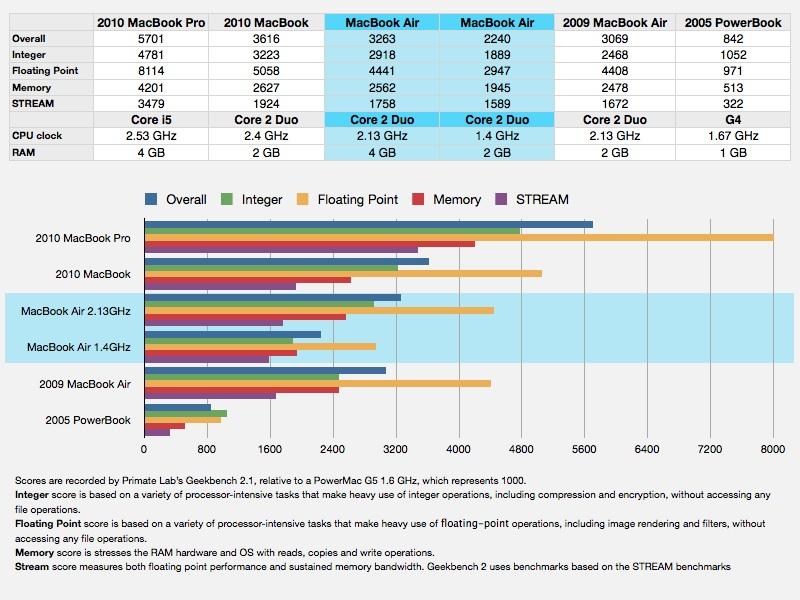
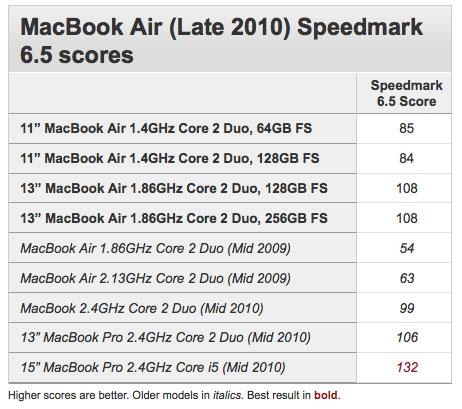
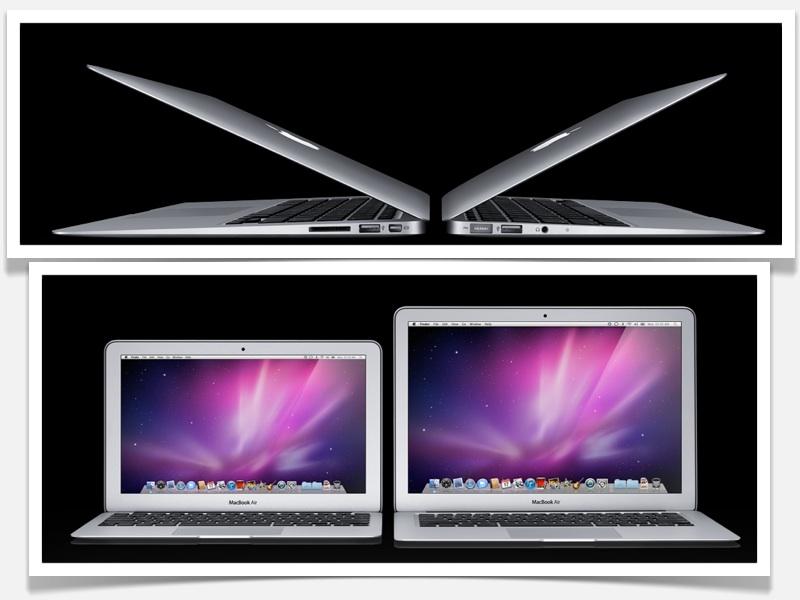
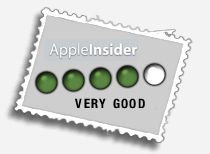











 Mike Wuerthele
Mike Wuerthele

 Malcolm Owen
Malcolm Owen
 Chip Loder
Chip Loder

 William Gallagher
William Gallagher
 Christine McKee
Christine McKee
 Michael Stroup
Michael Stroup







132 Comments
I'm still pissed that they dropped the backlit keyboard. That's one of the best features on my 13" MBP and my wife's first gen MBA. The new 13" is only a tad but thinner than the old one so there is no excuse.
Design trumps functionality I guess
I'm still pissed that they dropped the backlit keyboard. That's one of the best features on my 13" MBP and my wife's first gen MBA. The new 13" is only a tad but thinner than the old one so there is no excuse.
Design trumps functionality I guess
The keyboard is about cost savings and keeping the price down would be my conjecture. I bet the backlit keyboard costs significantly more than the non. Also battery life. My only real reservation is that they did not include gigabit ethernet. Your only options to get software on the MBA is buy an external DVD (more to carry around), a 100 baseT USB adapter that will not hit 100 baseT speeds (slow), or WiFi (slower). Gigabit connected to my iMac would be much faster. Since the 11" MBA will now be the only Mac without an SD card slot (I think), maybe Apple will convince software manufacturers to start distributing on SD cards. I know that no machine is going to be all things to all people but since Apple made a very fast machine for its' size, maybe they would speed up transferring large amounts of data to and from it. I would still love to have one and it has made me rethink my iPad lust.
Brian
IThe new 13" is only a tad bit thinner than the old one so there is no excuse.
Design trumps functionality I guess
That?s an odd statement without backing up that they could easily fit the backlit mechanisms for your 13? into that space.
Also, at the point that covers all the keys it?s a lot thinner. You can?t just look at the thickest part of each machine and say it?s a tad, because the new one tapers from the back to front pretty dramatically.
You can?t be sure that the mechanisms for backlighting over the front row of keys allow for enough room at that point with the battery underneath. If they had to decide between the backlighting and battery thickness then gong for a larger battery is the better functionality choice.
Or, what if it did require a new backlighting system that Apple had figured out in their labs, but it ended up costing way too much per unit, or were ultimately defective in their testing. This seems like a feature that would be in the later stages of the design, not the beginning.
There are numerous scenarios that aren?t about form without a function. I guarantee you that every form Apple uses has a function. Being thin and lightweight are functions of portability and these are important to Apple, especially on the MBAs.
Your only options to get software on the MBA is buy an external DVD (more to carry around), a 100 baseT USB adapter that will not hit 100 baseT speeds (slow), or WiFi (slower). Gigabit connected to my iMac would be much faster. Since the 11" MBA will now be the only Mac without an SD card slot (I think), maybe Apple will convince software manufacturers to start distributing on SD cards.
SW is typically small, compared to video media. On top of that, SW distributed on discs has been dwindling every year for sometime. Just look at the SW sections of B&M stores, they are tiny compared to what they used to be.
The only real holdout is the OS, because it needs to be separated from the drive it’s installing on, but Apple finally addressed that with these new MBAs. I think optical drives are reaching their EOL with Apple notebooks where physical space is at a premium. I expect Lion to be distributed on 8GB flash drives.
As for SD cards for SW, vendors can distribute on the internet (which they are doing) or on USB flash drives (which Apple is doing). Compared to the ODD, these Flash drives are cheap, so replacing one for the other in notebooks ends up saving Apple money. It also has an air of “coolness” about it while giving their engineers a lot of room to play with, all while giving the user back those 5.25” of port-side space that has gone unused for so many years now (at least for me).
The keyboard is about cost savings and keeping the price down would be my conjecture. I bet the backlit keyboard costs significantly more than the non. Also battery life.
Now I can understand that cost savings statement for the "entry level" 11" model, but I'm less forgiving for excluding it from the more expensive 13" model.
Let's face it, the MBA is supposed to be the "future of the MacBook line" -- if the future doesn't include a backlit keyboard, I'd prefer to stay in the past
But you guys are all right -- it's about design trade-offs. I would have gladly given up a few millimeters to keep the backlight if it was a matter of the mechanism being too thick.
Or maybe I'm just pissed because I see this as the PERFECT replacement for my 13" MBP -- the keyboard backlighting is the only fly in the ointment (I do a lot of typing for work at night in bed).